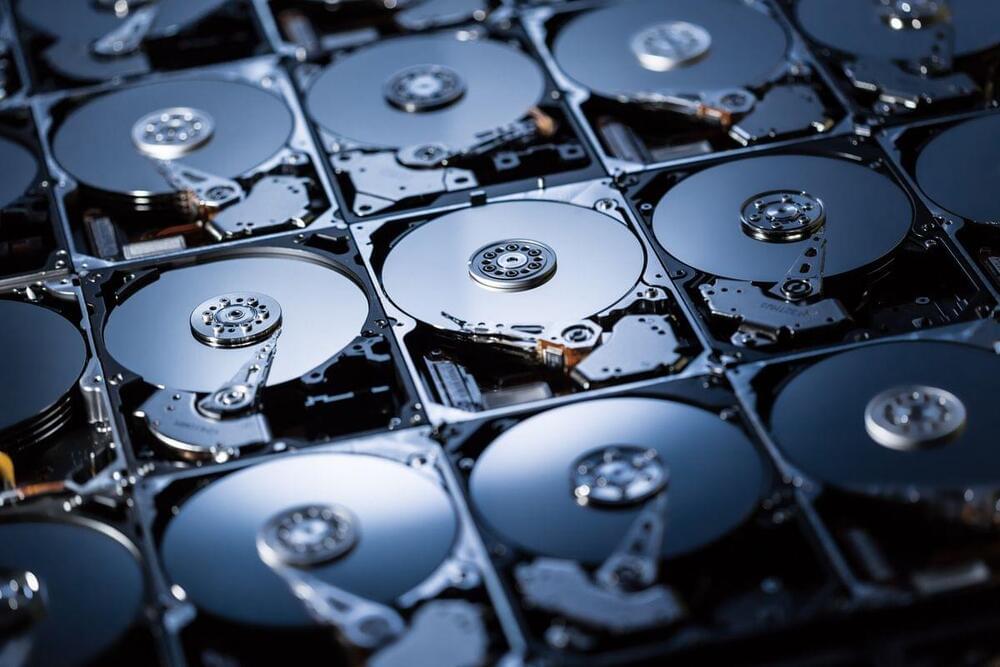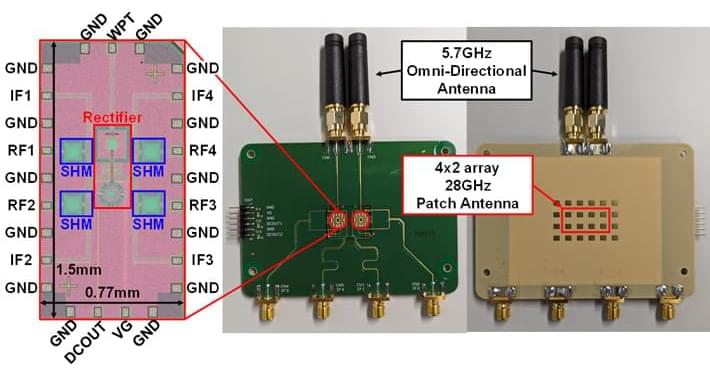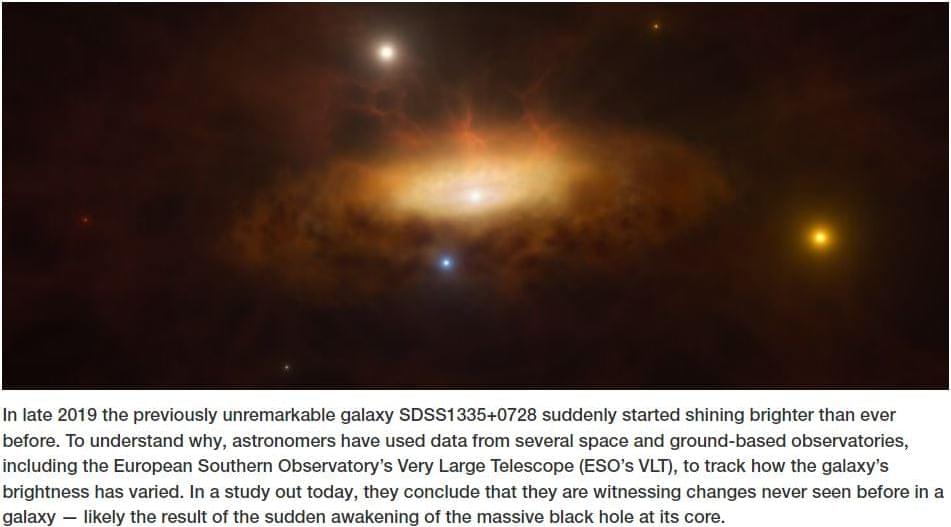Page 4
Jul 15, 2024
Tesla’s Megapack Technology Selected for Australia’s Largest Four-Hour Battery Storage System
Posted by Genevieve Klien in categories: energy, finance, sustainability
Tesla Energy secured a $375 million Megapack contract in Australia. The new Tesla Megapack contract will help build a 415 MW/1660 MWh battery Down Under, one of the largest four-hour batteries in the world.
Tesla Energy will supply Megapacks to Akaysha Energy’s Orana Battery Energy Storage System (BESS). The Orana project is located in New South Wales within Central West Orana’s Renewable Energy Zone (REZ).
We are very pleased to announce the successful closing of the debt financing of the Orana project as we move into construction on Akaysha’s first four-hour BESS to date. As the largest standalone BESS financing globally, this achievement not only secures the capital for Orana’s construction but also highlights the strong support we have received from both local and international banks, as well as from BlackRock. Their commitment to advancing the energy transition in Australia and internationally has been pivotal to reaching this milestone.
Jul 15, 2024
Chips could harvest their own energy using a newly-created alloy
Posted by Genevieve Klien in categories: computing, mobile phones, sustainability
Why it matters: Electronic devices, which encompass anything from mobile phones to data centers, are notorious energy hogs. One solution could be to harness their heat directly to create a technique for on-chip energy harvesting. The problem has been that none of the few materials able to do this is compatible with current technology in semiconductor fabrication plants. Now, researchers from across Europe have created a germanium-tin alloy that can convert computer processors’ waste heat back into electricity.
A research collaboration in Europe has created a new alloy of silicon, germanium, and tin that can convert waste heat from computer processors back into electricity. It is a significant breakthrough in the development of materials for on-chip energy harvesting, which could lead to more energy-efficient and sustainable electronic devices. Essentially, by adding tin to germanium, the material’s thermal conductivity has been significantly reduced while still maintaining its electrical properties, making it ideal for thermoelectric applications.
The researchers are from Forschungszentrum Jülich and IHP – Leibniz Institute for High Performance Microelectronics in Germany, the University of Pisa, the University of Bologna in Italy, and the University of Leeds in the UK. Their findings made it onto the cover of the scientific journal ACS Applied Energy Materials.
Jul 15, 2024
Revealing a master controller of development and ageing
Posted by Paul Battista in categories: biotech/medical, life extension
University of Queensland researchers have unlocked crucial molecular secrets of ageing in cells, potentially paving the way to improve quality of life as people age.
The study decoded the process by which genes regulate how people mature as they grow and age, and was led by Dr Christian Nefzger from UQ’s Institute for Molecular Bioscience with key contributions from Dr Ralph Patrick and Dr Marina Naval-Sanchez.
Dr Nefzger said that until now the process of how genes change activity from birth to adulthood and into old age was largely unknown.
Jul 15, 2024
Wirelessly Powered Relay will help bring 5G Technology to Smart Factories
Posted by Natalie Chan in categories: internet, robotics/AI
The proposed innovative design leads to unprecedented power conversion efficiency and improved versatility. A recently developed wirelessly powered 5G relay could accelerate the development of smart factories, report scientists from Tokyo Tech. By adopting a lower operating frequency for wireless power transfer, the proposed relay design solves many of the current limitations, including range and efficiency. In turn, this allows for a more versatile and widespread arrangement of sensors and transceivers in industrial settings.
One of the hallmarks of the Information Age is the transformation of industries towards a greater flow of information. This can be readily seen in high-tech factories and warehouses, where wireless sensors and transceivers are installed in robots, production machinery, and automatic vehicles. In many cases, 5G networks are used to orchestrate operations and communications between these devices.
To avoid relying on cumbersome wired power sources, sensors and transceivers can be energized remotely via wireless power transfer (WPT). However, one problem with conventional WPT designs is that they operate at 24 GHz. At such high frequencies, transmission beams must be extremely narrow to avoid energy losses. Moreover, power can only be transmitted if there is a clear line of sight between the WPT system and the target device. Since 5G relays are often used to extend the range of 5G base stations, WPT needs to reach even further, which is yet another challenge for 24 GHz systems.
Jul 15, 2024
Treating the Gut-Brain Connection with B Vitamins to Treat Parkinson’s Disease
Posted by Natalie Chan in categories: biotech/medical, neuroscience
A study led by Nagoya University Graduate School of Medicine in Japan has revealed a link between gut microbiota and Parkinson’s disease (PD). The researchers found a reduction in the gut bacteria of genes responsible for synthesizing the essential B vitamins B2 and B7. They also identified a relationship between the lack of these genes and low levels of agents that help maintain the integrity of the intestinal barrier. This barrier prevents toxins from entering the bloodstream, which causes the inflammation seen in PD. Their findings, published in npj Parkinson’s Disease, suggest that treatment with B vitamins to address these deficiencies can be used to treat PD.
PD is characterized by a variety of physical symptoms that hinder daily activities and mobility, such as shaking, slow movement, stiffness, and balance problems. While the frequency of PD may vary between different populations, it is estimated to affect approximately 1–2% of individuals aged 55 years or older.
Various physiological processes are heavily influenced by the microorganisms found in the gut, which are collectively known as gut microbiota. In ideal conditions, gut microbiota produce SCFAs and polyamines, which maintain the intestinal barrier that prevents toxins entering the bloodstream. Toxins in the blood can be carried to the brain where they cause inflammation and affect neurotransmission processes that are critical for maintaining mental health.
Jul 15, 2024
Astronomers see a Massive Black Hole Awaken in Real Time
Posted by Natalie Chan in categories: cosmology, physics
In late 2019 the previously unremarkable galaxy SDSS1335+0728 suddenly started shining brighter than ever before. To understand why, astronomers have used data from several space and ground-based observatories, including the European Southern Observatory’s Very Large Telescope (ESO’s VLT), to track how the galaxy’s @brightness has varied. In a study out today, they conclude that they are witnessing changes never seen before in a galaxy – likely the result of the sudden awakening of the massive black hole at its core.
“Imagine you’ve been observing a distant galaxy for years, and it always seemed calm and inactive,” says Paula Sánchez Sáez, an astronomer at ESO in Germany and lead author of the study accepted for publication in Astronomy & Astrophysics. “Suddenly, its [core] starts showing dramatic changes in brightness, unlike any typical events we’ve seen before.” This is what happened to SDSS1335+0728, which is now classified as having an ‘active galactic nucleus’ (AGN) — a bright compact region powered by a massive black hole — after it brightened dramatically in December 2019 [1].
Some phenomena, like supernova explosions or tidal disruption events — when a star gets too close to a black hole and is torn apart — can make galaxies suddenly light up. But these brightness variations typically last only a few dozen or, at most, a few hundreds of days. SDSS1335+0728 is still growing brighter today, more than four years after it was first seen to ‘switch on’. Moreover, the variations detected in the galaxy, which is located 300 million light-years away in the constellation Virgo, are unlike any seen before, pointing astronomers towards a different explanation.

The legal system is struggling to keep up with the criminalization of deepfake revenge porn, raising concerns about privacy, consent, and the need for more resources to detect and prove the authenticity of digital evidence.
Questions to inspire discussion.
Continue reading “The Legal War Against Deepfake Revenge Porn” »

When listen to void of space, we hear no alien signals, but could the galaxy be quiet because ancient empires slumber inside it? Watch my exclusive video Planetary Archives & Stasis Vaults: https://nebula.tv/videos/isaacarthur–… Nebula using my link for 40% off an annual subscription: https://go.nebula.tv/isaacarthur Get a Lifetime Membership to Nebula for only $300: https://go.nebula.tv/lifetime?ref=isa… Use the link gift.nebula.tv/isaacarthur to give a year of Nebula to a friend for just $30. Join this channel to get access to perks: / @isaacarthursfia Visit our Website: http://www.isaacarthur.net Join Nebula: https://go.nebula.tv/isaacarthur Support us on Patreon:
/ isaacarthur Support us on Subscribestar: https://www.subscribestar.com/isaac-a… Facebook Group:
/ 1,583,992,725,237,264 Reddit:
/ isaacarthur Twitter:
/ isaac_a_arthur on Twitter and RT our future content. SFIA Discord Server:
/ discord Credits: Dormant Alien Empires Episode 455a; July 14, 2024 Produced, Narrated & Written: Isaac Arthur Editors: Darius Said & Mark Surber Graphics: Mihail Yordanov Jeremy Jozwik Ken York YD Visual LegionTech Studios Sergio Botero Udo Schroeter Music Courtesy of Epidemic Sound http://epidemicsound.com/creator Lombus, “Cosmic Soup” Sergey Cheremisinov, “Labyrinth” Stellardrone, “Red Giant”, “The Divine Cosmos” Select imagery/video supplied by Getty Images.
















